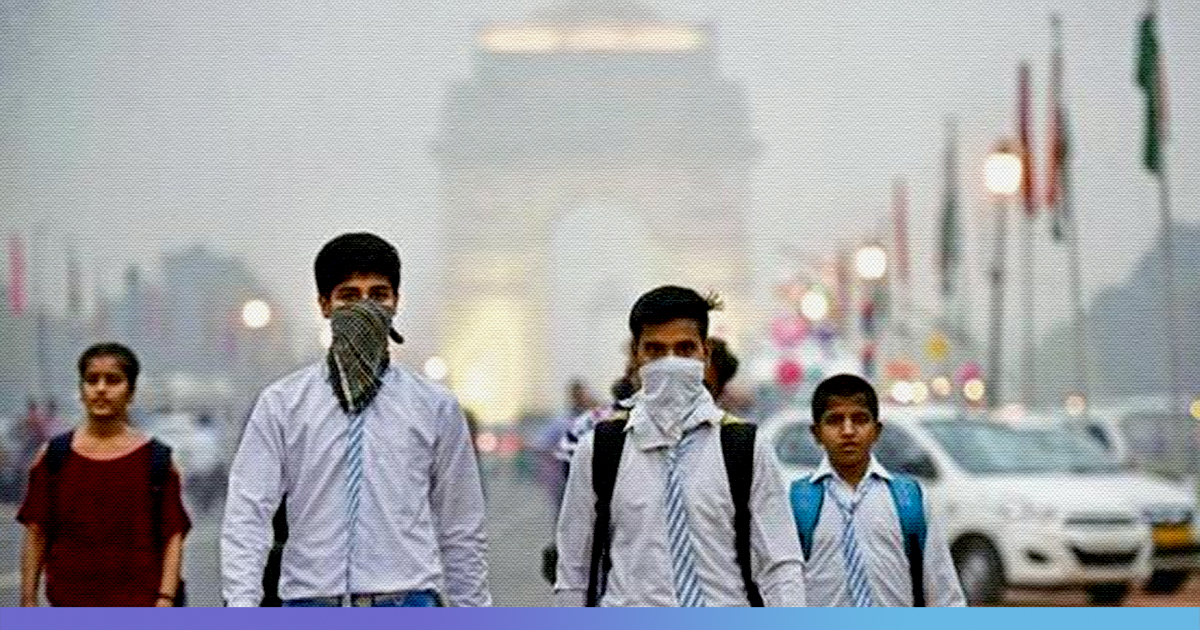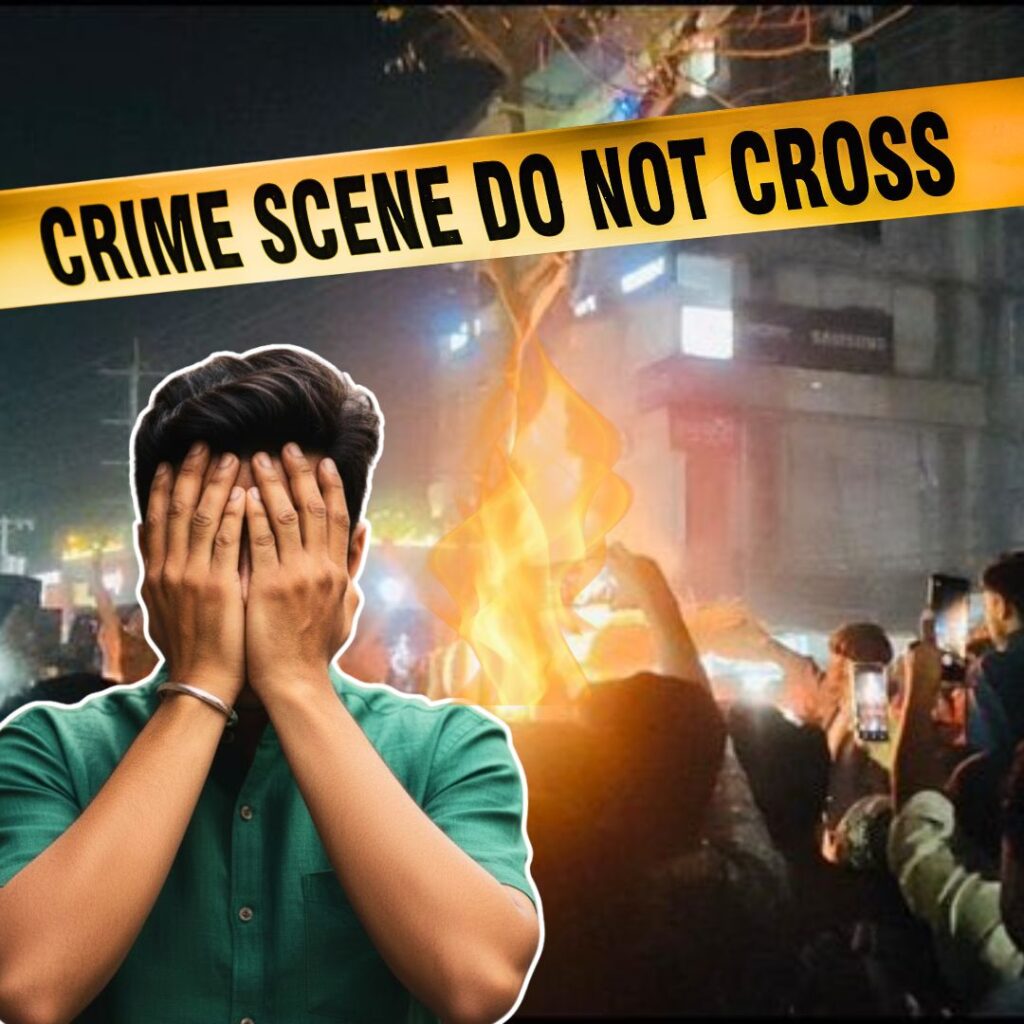On the morning of October 3, Sunday, Delhi woke up to doomsday. People shuddered at the overwhelming smog that hung in the air. The opaque, grey mist covered the city’s landscape.
People were afraid to step outside as the unpleasant, bitter air stung the eyes and scorched the nostrils. Those indoors felt like they could smell something toxic burning.
Delhi’s average AQI was recorded at a whopping 494, which is only six points short of the maximum reading of 500 on Central Pollution Control Board’s air quality index. In the National Capital Region (NCR), Faridabad with AQI 493, Noida (494), Ghaziabad (499) and Greater Noida (488), Gurugram (479), also breathed extremely toxic area.
As scattered rains on Saturday increased humidity, the apocalyptic haze stiffened its grip on Delhi. Ever since the toxic mist has been preventing sun rays from warming the ground.
“Stepping out of the house has become an ordeal as it causes a burning sensation in the eyes. Also, I am more worried about some of my friends arriving in India from the Netherlands. They have heard and read so much about the alarming level of pollution in the city leading to the closure of schools that they are worried about their own well-being during their stay. It’s upsetting that people from outside the country have to think twice before coming here,” 29-year-old Mayank Muley, a resident of Rohini, Delhi, tells The Logical Indian.
Rupali Joshi, who is coming to Delhi from Canada in a few days, says, “Reading about how serious the condition of my city is, is absolutely terrifying. This will be my daughter Sara Joshi’s first visit to India, and I cannot imagine the kind of trouble we might have to face.”
Delhi has once again turned into a gas chamber.
What Are Experts Saying?
To understand how this terrifying pollution is being caused, The Logical Indian spoke to Chitra Mukherjee, who heads the Advocacy and Outreach programme at Chintan Environmental Research and Action Group.
“At the moment, stubble burning has become the most widely discussed issue, and for good reasons. It is indeed the major factor that is contributing to the air pollution, especially at this time of the year,” says Mukherjee.
“But stubble burning is definitely not the only factor. Another major issue is vehicular pollution, because of which the odd-even scheme is being implemented. Coupled with it is the pollution that was recently caused by fire-crackers during Diwali. There is also a huge waste management issue here – there are landfills that are constantly burning. Stubble burning is basically a great addition to an already polluted city,” she adds.
“The extra attention being given to growing paddy in Punjab and Haryana is becoming an issue as there is not enough manpower to manually get rid of the stubble. The only option is to burn them. However, the government must be working towards providing an alternative,” says Prarthana Borah, India Director, Clean Air Asia.
“A disadvantaged geographic location and regional meteorology with windy and dusty conditions during summer contributes greatly to Delhi’s air pollution. This is particularly worsened by low relative humidity that increases particle re-suspension. In addition, there is episodic dust transport events from surrounding areas,” says Prarthana Borah, India Director, Clean Air Asia.
“As a land-locked megacity, there are limited avenues for the polluted air to be flushed out of Delhi. Nor is Delhi in the advantageous position of enjoying replacement of air from relatively unpolluted marine regions,” Borah adds.
“This means that atmospheric transport from all directions, adds to pollution in the city. Air, as we know, has no boundaries and when air is a transboundary problem it requires a regional approach. Delhi’s air pollution being a regional problem, there is very little that Delhi can do about it on its own,” Borah says, “Unless the governments of Haryana, Punjab and Delhi work together to address the issue and look at collectively controlling the pollution from neighbouring power plants and biomass burning, residents of landlocked Delhi will continue to bear the brunt of bad air quality.”
She further says: “There are several coal-fired power stations that operate in 300- kilometre radius of Delhi. Smoke from post-harvest burning in Haryana and Punjab reach Delhi in winter. A study conducted by the National Environmental Engineering Research Institute (NEERI) in Nagpur and the International Institute for Applied Systems Analysis (IIASA) showed that about 60% of the PM2.5 burden in Delhi is due to transboundary sources. No policy is likely to work unless it takes a regional approach and the cities collaborate.”
When asked about a solution, Borah says: “The solution lies in addressing air quality as a long term policy issue that needs to be integrated in the planning process, so we do not just discuss it when the air turns severe and hazardous in October in Delhi, but right in the beginning when we look at our economic policy for the entire country. China has managed to reach targets not by publishing data or because of public demand but because the national government has included air quality management in the national planning process.
“If we have to address the issue of air quality what is required is the active promotion of better air as a component while identifying, planning, designing and implementing development strategies and policies. This means addressing air quality issues strategically as a cross-cutting aspect of development and goes beyond just air pollution mitigation to a more holistic and strategic approach to achieving sustainable development,” she adds.
What Are Farmers saying?
Farmers from Punjab and Haryana say that stubble burning is a major issue because the government has failed to provide all the farmers with the necessary machinery.
The Punjab government has initiated action against as many as 3,000 farmers for burning stubble. The Amarinder Singh government says it hopes to cut down stubble burning in the state by 10 to 20 per cent this year.
I have been farming for a long time now, but I do not engage in stubble burning,” says farmer Rajmohan Singh Kaleka from Patiala, Punjab. “But that is because I am privileged enough to be able to afford the kind of machinery that can replace stubble burning. The government has not yet provided all farmers with the necessary equipment.”
“Another reason why stubble burning is so widespread in Punjab is because using the machines results in lesser output compared to when the stubble is burnt,” he adds.
39-year-old farmer Parkash Singh from Haryana’s Kurukshetra district says that the government is not doing enough to provide a permanent replacement for stubble burning.
“I am among the few farmers who can afford the machinery. The government promises to genuinely address the issue, but I see no result. What example is it trying to set by taking action against farmers who burn stubble? Several factors make it economically not viable for most farmers to go for hi-end ways of managing the stubble,” Parkash says.
He adds, “Stubble burning in Punjab and Haryana is not just causing pollution in Delhi, but the people of our villages are suffering too. There is a lot the government still has to do. There are scores of issues to be addressed. How can everyone quit stubble burning altogether without being provided with an alternative?”
When the current state of Delhi becomes better and we see the blue sky again, we will be quick to get over the issue and forget how scary the situation had become, until it happens again.
Also Read: Stubble Burning In Neighboring States Leaves Delhi Gasping For Air, Wake Up Call For State Govts?












